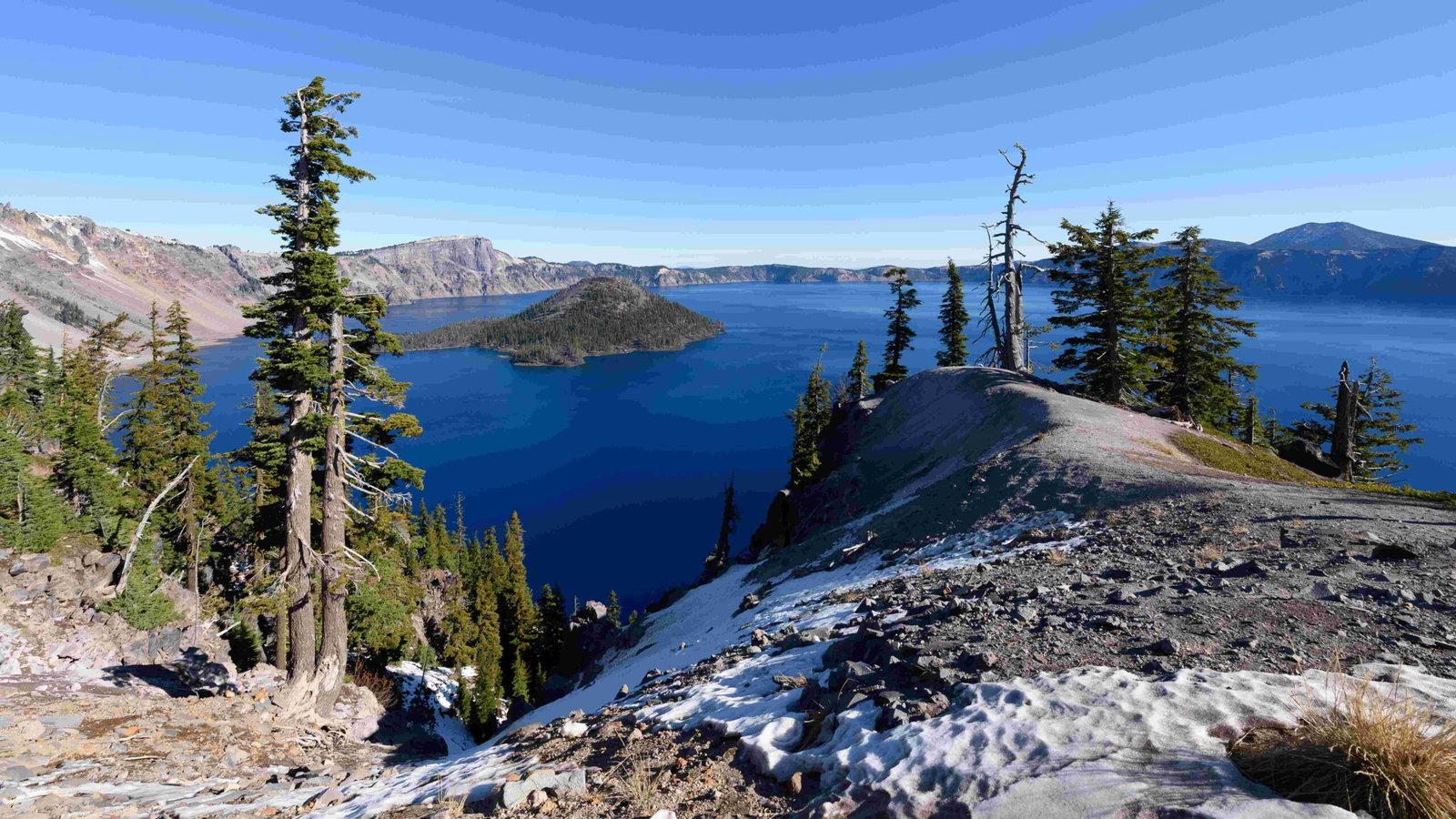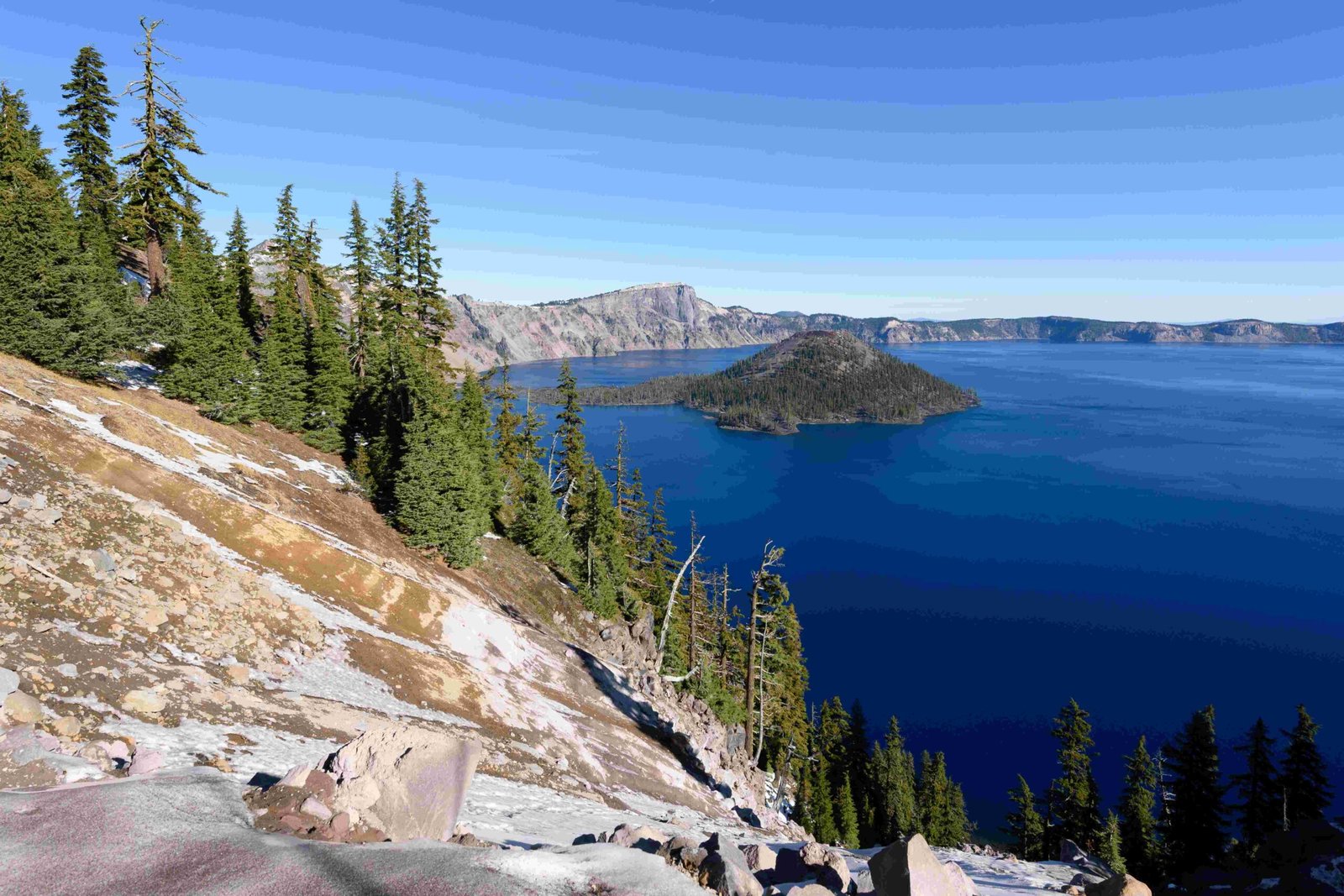Crater Lake reflections offer a mesmerizing spectacle, drawing photographers from around the world. The pristine waters of this ancient caldera mirror the surrounding landscape, creating stunning visual effects. Capturing these reflections requires understanding the best times, locations, and techniques. This guide provides comprehensive information on how to photograph Crater Lake’s reflections, including optimal viewing spots, accessibility details, and tips for dealing with various challenges.
What Are the Best Times to Capture Crater Lake Reflections?

Morning Magic
- Golden Hour: Arrive 1 hour before sunrise
- Calm Waters: Lake surface is typically still
- Soft Light: Enhances colors and reduces harsh shadows
Evening Enchantment
- Pre-Sunset Glow: About 1 hour before sunset
- Warm Tones: Sun’s position provides a golden hue
- Tranquil Conditions: Lake often calm in early evening
Seasonal Considerations
- Summer
- Generally calm conditions
-
Potential haze after 9:00 AM
-
Early Fall (September)
- Cooler temperatures
-
Calm lake surface
-
Spring
- Unique elements like low-hanging clouds or fog
- Higher chance of cloud cover
Where Are the Top Spots for Viewing Crater Lake Reflections?

1. Rim Village
- Location: South end of the lake
- Accessibility: Wheelchair-friendly
- Parking: Ample facilities nearby
- Views: Good all day, especially with sun at back or side
2. Watchman Overlook
- Location: West rim
- GPS: 42.9433° N, 122.0833° W
- Access: Short walk from parking; not wheelchair accessible
- Highlight: Panoramic views, excellent for early morning and late evening
3. Cloudcap Overlook
- Location: East rim
- GPS: 42.9333° N, 122.0667° W
- Access: Short walk; limited wheelchair accessibility
- Feature: Twisted whitebark pines, serene lake views
How Accessible Are These Viewing Points?
Wheelchair-Friendly Options
- Rim Village: Accessible paths and viewpoints
Parking Information
| Location | Parking Availability | Proximity to Viewpoint |
|---|---|---|
| Rim Village | Ample | Close |
| Watchman Overlook | Limited | Short walk |
| Cloudcap Overlook | Moderate | Short walk |
Transportation
- Shuttle services available during peak season
- Not specifically tailored for photography needs
What Challenges Might Photographers Face?
Weather-Related Issues
- Cloud Cover
- Late evenings prone to clouding over
-
Early mornings generally clearer
-
Wind
- Afternoon winds can disturb lake surface
- Mornings and evenings typically calmer
Equipment Recommendations
- Wide-Angle Lens: Essential for capturing lake expanse
- Ultra-wide options: 11-24mm or 12-24mm
- Tripod: Crucial for stability in low light
- Polarizing Filter: Intensifies blue skies, reduces glare
Crowd Avoidance Strategies
- Early Arrival: Beat the crowds by coming at dawn
- Less Popular Spots: Choose Cloudcap or Watchman over Rim Village during peak hours
How Can Photographers Maximize Their Crater Lake Reflection Shots?
Composition Tips
- Rule of Thirds: Place horizon on upper or lower third line
- Foreground Interest: Include rocks or trees for depth
- Symmetry: Use reflections to create mirror images
Camera Settings
| Setting | Recommendation | Purpose |
|---|---|---|
| Aperture | f/8 to f/11 | Depth of field |
| ISO | 100-400 | Minimize noise |
| Shutter Speed | Varies | Based on light conditions |
Post-Processing Suggestions
- Enhance Contrast: Bring out details in reflections
- Color Balance: Adjust to match actual scene colors
- Crop: Fine-tune composition if needed
What Are Some Lesser-Known Facts About Crater Lake Reflections?
Optical Illusions
- Inverted Landscape: Reflections create a ‘double world’ effect
- Depth Perception: Lake’s clarity can distort distance estimates
Scientific Significance
- Water Purity: Reflections indicate exceptional water clarity
- Climate Record: Lake surface acts as a natural mirror for atmospheric changes
Cultural Importance
- Native American Legends: Lake reflections feature in tribal stories
- Artistic Inspiration: Countless paintings and photographs inspired by reflections
How Does Weather Affect Crater Lake Reflections?
Wind Impact
- Ripple Effect: Even slight breezes can disrupt perfect reflections
- Wind Patterns: Understanding local wind trends helps in planning
Cloud Formations
- Dramatic Skies: Partly cloudy days offer dynamic reflection opportunities
- Overcast Conditions: Diffused light can enhance color saturation
Seasonal Variations
| Season | Reflection Quality | Unique Features |
|---|---|---|
| Summer | Excellent | Long days, calm waters |
| Fall | Very Good | Colorful foliage reflections |
| Winter | Limited | Ice and snow effects |
| Spring | Good | Potential for misty conditions |
What Equipment Is Essential for Capturing Crater Lake Reflections?
Camera Gear
- DSLR or Mirrorless Camera: For high-quality images
- Wide-Angle Lens: Capture expansive views
- Telephoto Lens: For detailed shots of distant features
Accessories
- Sturdy Tripod: Essential for long exposures
- Remote Shutter Release: Minimize camera shake
- Neutral Density Filters: For long exposures in bright conditions
Additional Items
- Weather-Appropriate Clothing: Layers for temperature changes
- Headlamp: For early morning or late evening shoots
- Lens Cleaning Kit: Maintain clear optics in dusty conditions
By following these guidelines and tips, photographers can capture stunning Crater Lake reflections that showcase the natural beauty of this unique landscape. Remember to respect the environment and follow park regulations while pursuing your perfect shot.
References:
1. Photography Life – Crater Lake – Best Photo Spots
2. Xanterra – Magic Moments: How to Take Great Family Photos in National Parks
3. Fodor’s Travel Talk Forums – Crater Lake, OR – Best Time of Day?
4. National Parks Traveler – Photography In The National Parks: A Short Stay in Crater Lake National Park
5. TripAdvisor – Time of Day When Lighting is Best? – Crater Lake National Park Forum

